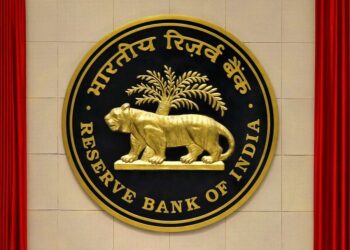The US dollar has long dominated the world market. It has established itself as quite a Goliath, especially in comparison to some of its less powerful peers. But times are changing. The Indian rupee has long been a significant currency in South Asia. Could it potentially evolve into a global reserve currency?
Let’s find out!
Uday Kotak’s Perspective
According to Kotak, maintaining macroeconomic stability is crucial. We are certainly on the right path, but we cannot falter now. This involves managing inflation, fiscal deficit, and ensuring financial discipline.
Apart from that, Kotak also emphasised the need for attracting foreign capital and implementing reforms. After all, if global investors don’t come to India, how will we encourage more people to use the rupee? We need to foster a conducive environment for investment actively.
Nouriel Roubini’s Optimism
Renowned economist Nouriel Roubini has expressed optimism about the Indian rupee’s potential.
Roubini points out that the rupee’s growing share in global trade, along with India’s rising economic prowess, could enhance its standing in the international financial system. He emphasised, however, that India needs to focus on manufacturing. Forming new trade agreements can be a step in the right direction.
This suggests that the rupee’s journey toward becoming a reserve currency may be plausible, provided India continues on its path of economic growth and stability.
The Decline of the US Dollar
The dominance of the US dollar as the world’s primary reserve currency has faced challenges in recent years. This shift in the global financial landscape presents an opportunity for other currencies, including the Indian rupee, to step forward.
This is only logical, after all. There is a window of opportunity that has opened up, and the Indian rupee is rightly positioned to take advantage.
India’s Strengthening Position
Recent developments in the international markets have been favorable for the rupee. One example is the US Federal Reserve’s indication of an end to rate hikes. This announcement has boosted the rupee’s value, indicating that India’s economic progress and stability have not gone unnoticed by global investors. A stronger rupee and a favorable economic environment are key elements that contribute to the rupee’s growing potential as a reserve currency.
The Road Ahead
While the Indian rupee’s ascent to reserve currency status is not without its challenges, the potential is certainly worth considering. Factors such as India’s economic stability, its growing prominence in global trade, and the shifting landscape of international currencies contribute to this possibility.
However, it is important to remember that the future of the Indian rupee as a reserve currency is speculative, and further developments in the global financial landscape will ultimately determine its fate. Nevertheless, India’s progress and the recognition of its economic potential suggest that the Indian rupee has a chance to carve out a place among the world’s reserve currencies.
In conclusion, the Indian rupee’s journey toward becoming a global reserve currency is an intriguing possibility. With efforts to maintain a stable economy and seize opportunities, India has the potential to establish the rupee as a recognised reserve currency. While uncertainties remain, the progress made and the positive performance of the rupee signal a promising path ahead.








